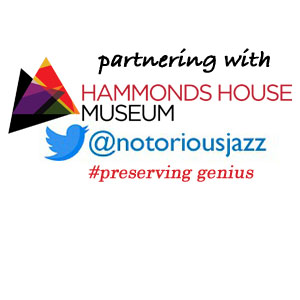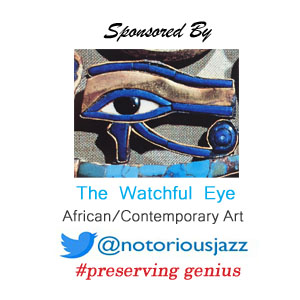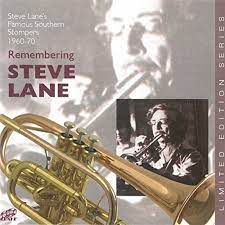
Daily Dose Of Jazz…
Steve Lane was born on November 7, 1921 in London, England where his father was a concertina player who recorded with the Rio Grande Tango Orchestra in the 1920s. Having heard his first jazz in the Rhythm Clubs of the late 1930s, his first choice of instrument was guitar, but, following wartime service, he switched to the cornet on which he soon developed a jazz style based on the hot trumpeters of the 1920s he so much admired, with particular emphasis on his role leading the collective ensemble.
A gifted composer of vocal and instrumental pieces, he deftly incorporated female vocalists as an integral part of the band, thus presenting a range of songs carefully chosen to showcase the singer, and the supporting musicians strictly trained in the art of accompaniment. A taskmaster offering little compensation and weekly rehearsals, his personnel changed often but allowed him the ability to discover young talent such as pianists Martin Litton and Bruce Boardman and trombonist Bob Hunt.
Steve led his own Southern Stompers jazz band in the early 1950, and also led and recorded with his Red Hot Peppers and the VJM Washboard Band for over 50 years. In 1952 he established the Ealing Jazz Club, and in the Sixties establishe the West End Jazz Club and was a founding partner of VJM Records.
Cornetist, guitarist, composer, arranger and bandleader Steve Lane, who was a traditional jazz player, passed awya on August 22, 2015 at age 93.
More Posts: arranger,bandleader,composer,cornet,guitar,history,instrumental,jazz,music,vocal
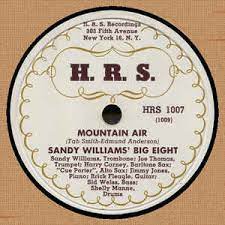
Daily Dose Of Jazz…
Alexander Balos “Sandy” Williams was born on October 24, 1906 in Summerville, South Carolina, the son of a preacher. The family of thirteen moved to Washington D.C. when he was very young however, losing their parents six months apart, they were sent to an orphanage in Delaware. There he joined the school band, but was put on tuba rather than trombone despite his requests. Taking private lessons while attending Armstrong High School, he occasionally played with his professor’s sons, and played with several bands before he started playing with the Lincoln Theater pit band.
Fletcher Henderson strongly influenced Williams jazz musicianship which received local notice. He played with Claude Hopkins, and later in 1929 joined Horace Henderson. He became a staple player in the Chick Webb band from 1933-1940 where he later worked with Ella Fitzgerald. Through the Forties he went on to work with other bands including Cootie Williams, Sidney Bechet, Duke Ellington, Art Hodes and Roy Eldridge, with whom he toured Europe in 1947.
By the early Forties Sandy was suffering from alcoholism, and despite his attempts to become sober, he continued to drink with many of his band leaders until he suffered from a severe breakdown with his health in 1950 causing him to retire from music.
Although he attempted to return to music, his dental health affected his embouchure causing him to quit music entirely. Trombonist Sandy Williams passed away on March 25, 1991 in New York City.
More Posts: bandleader,history,instrumental,jazz,music,trombone
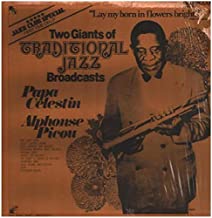
Daily Dose Of Jazz…
Alphonse Floristan Picou was born on October 19, 1878 in New Orleans, Louisiana into a prosperous middle-class Creole of Color family in downtown NOLA. Taking to music early by 16, he was working as a professional musician on both the guitar and clarinet, concentrating on the latter. To appease his family’s frown on music he trained and worked as a tinsmith, but in demand as a clarinetist, he made most of his living from music.
He played classical music with the Creole section’s Lyre Club Symphony Orchestra and played with various dance bands and brass bands including those of Bouboul Fortunea Augustat, Bouboul Valentin, Oscar DuConge, Manuel Perez, Freddie Keppard, Bunk Johnson, the Excelsior Brass Band, the Olympia Brass Band among others.
Due to his light-skin Picou sometimes worked with white bands as well in his youth. He was one of the early musicians playing in the new style that was developing in the city, not yet known as “jazz”. He sometimes played with Buddy Bolden, perhaps the most important force in the musical change. He was an influence for many of the up and coming younger clarinetists. His subtle variations are usually more melodic embellishments than what would later be called improvisation.
At least once he went north to Chicago, Illinois around 1917 and briefly to New York City in the early 1920s. Not liking life up North, he spent most of his career in his home city, writing tunes for King Oliver that included Alligator Hop and Olympia Rag.
Clarinetist and arranger Alphonse Picou, perhaps best known for originating the clarinet part on the standard High Society, passed away on February 4, 1961 in New Orleans.
More Posts: clarinet,history,instrumental,jazz,music

Daily Dose Of Jazz…
Spencer Williams was born on October 14, 1889 in New Orleans, Louisiana and was educated at St. Charles University in his hometown. Performing in Chicago, Illinois by 1907, he moved to New York City about 1916 where he co-wrote several songs with Anton Lada of the Louisiana Five. Among those songs was Basin Street Blues, which became one of his most popular songs and is still recorded by musicians to this day.
Touring Europe with bands from 1925 to 1928, during this time he wrote for Josephine Baker at the Folies Bergère in Paris. Returning to New York City for a few years, at the end of the Roaring Twenties, Williams was tried but then acquitted on a charge of murder. In 1932, he was back in Europe where he spent many years in London, England before moving to Stockholm in 1951.
A prolific composer, some of Spencer’s compositions that became hit songs were Basin Street Blues, I Ain’t Got Nobody, Royal Garden Blues, Mahogany Hall Stomp, I’ve Found a New Baby, Tishomingo Blues and Everybody Loves My Baby, among numerous others.
Returning once again to New York City in 1957, pianist, composer, vocalist and bandleader Spencer Williams, was posthumously inducted into the Songwriters Hall of Fame. He passed away on July 14, 1965 in Flushing, New York.
More Posts: bandleader,composer,history,instrumental,jazz,music,piano,vocal
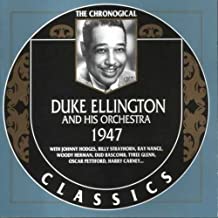
Daily Dose Of Jazz…
Francis Williams was born September 20, 1910 in McConnell’s Mill, Pennsylvania. His first gigs were with Frank Terry’s Chicago Nightingales in the 1930s.
In 1940 he moved to New York City, and in the first half of the decade played in the bands of Fats Waller, Claude Hopkins, Edgar Hayes, Ella Fitzgerald, Sabby Lewis, and Machito. From 1945 to 1949, and again in 1951, he played and recorded extensively as a member of Duke Ellington’s orchestra.
Williams worked primarily with Latin jazz ensembles and New York theater bands in the 1950s and 1960s, and played with Clyde Bernhardt and the Harlem Blues and Jazz Band. In addition to working with his own quartet, near the end of his life he worked with Panama Francis.
Trumpeter Francis Williams, who was a single father of two, had one son, actor Greg Morris, passed away on October 2, 1983 in Houston, Texas.
More Posts: bandleader,history,instrumental,jazz,music,trumpet


